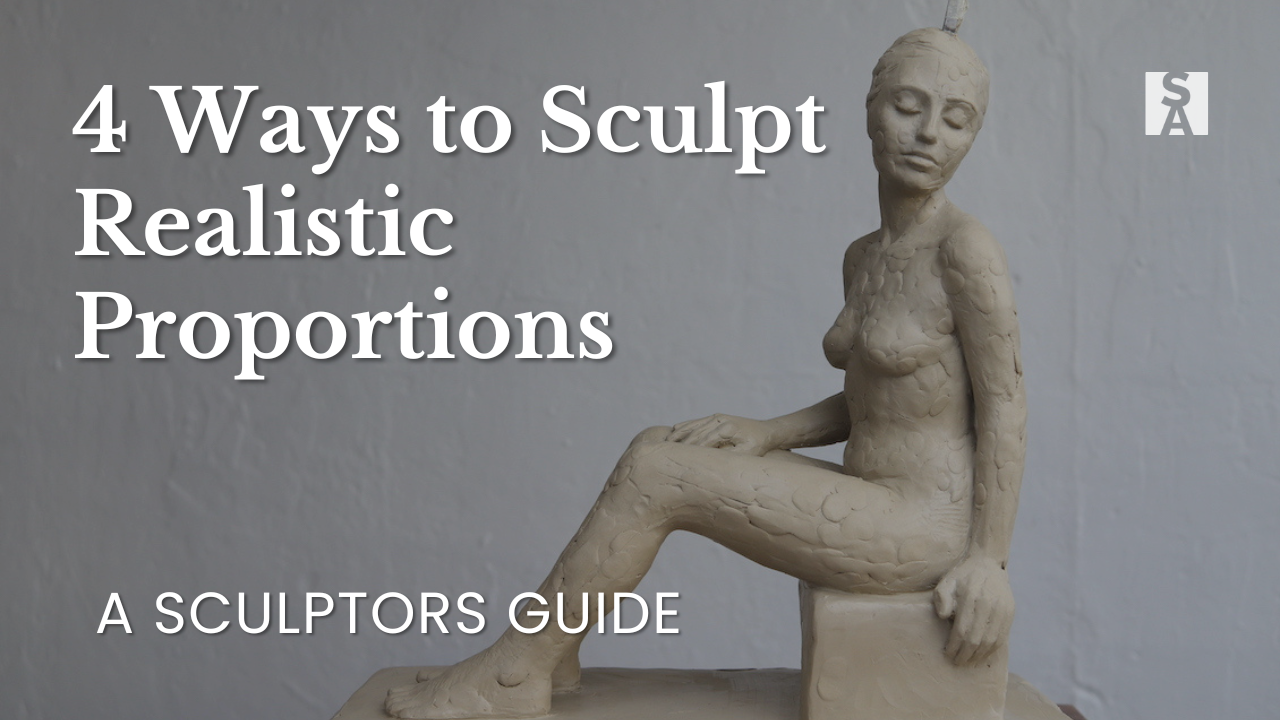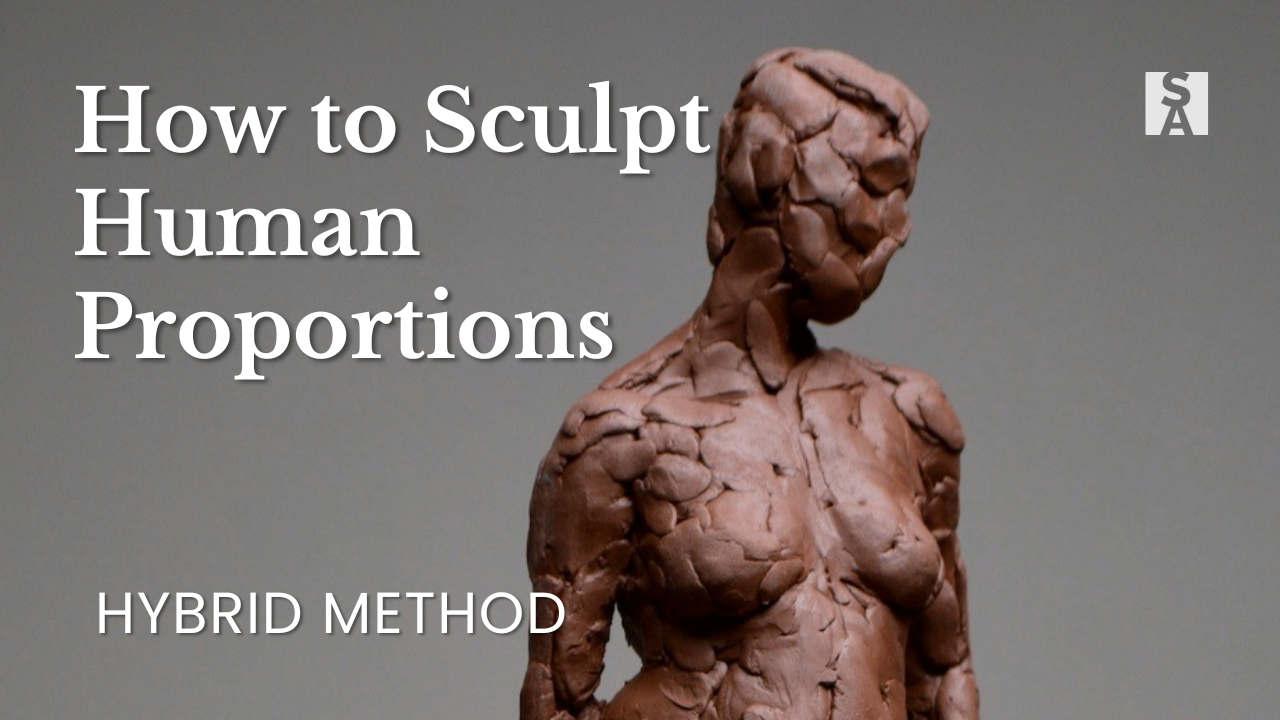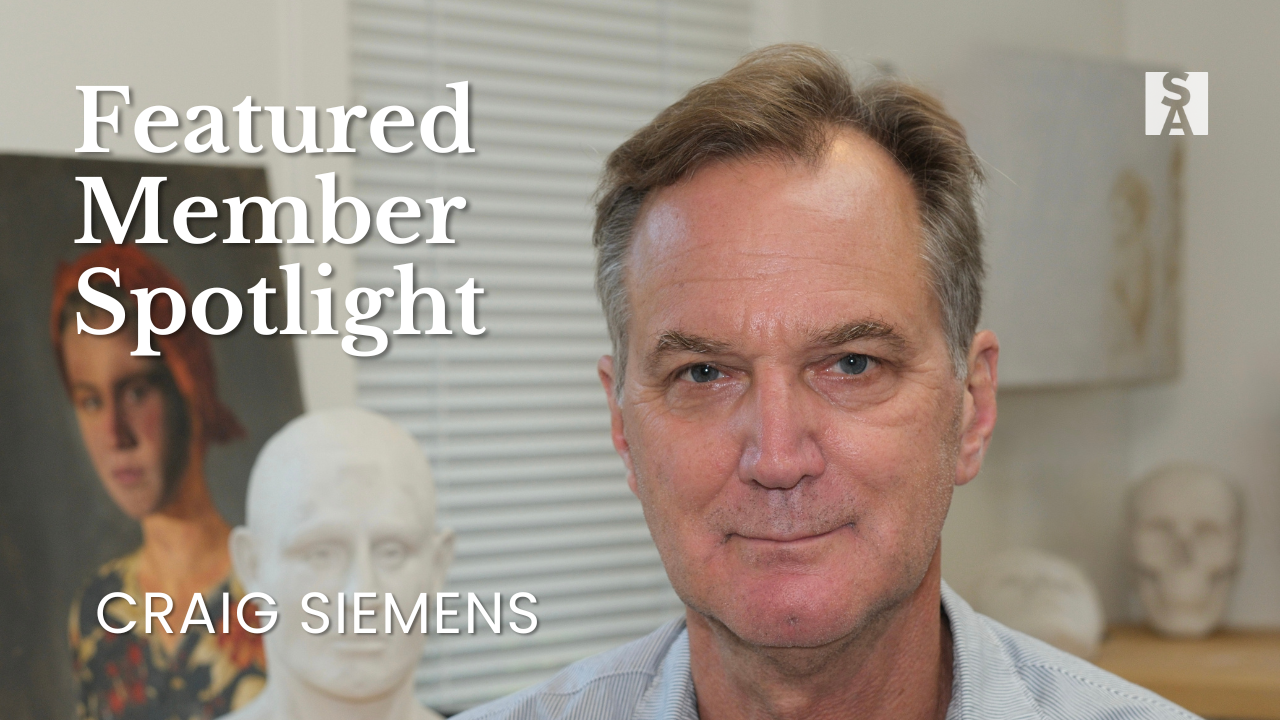How to Sculpt Realistic Proportions: Visual Observation for Sculptors

If you’ve ever felt your sculpture looks “correct” but something still seems off in the proportions or likeness, the issue often comes down to how well you’re seeing. It’s not talent or anatomy - it’s eye training. Without learning to truly observe, capturing realistic proportions is a constant struggle.
Visual observation is one of the most essential and overlooked skills a sculptor can develop. It goes beyond canons of proportions and measurement techniques, complementing them to transform a technically accurate figure into one with believable, lifelike proportions that carry personality and presence.
In this post, I’ll explain what observational sculpting really means, why it’s a skill anyone can learn (it’s not about talent), and how to start training your eye to judge proportions more accurately and confidently.
This post is part of a 4-part series on how to sculpt realistic human proportions.
In this article, we’ll focus on a foundational skill: training your eye through observation.
Explore the other methods in the series:
- Canon of Proportions
- Direct Measurement
- Hybrid Method
Table of Contents
- Why Visual Observation Is Essential
- What Is Observational Sculpting?
- 4 Ways Eye Training Improves Your Proportions
- Why Most Proportion Mistakes Start With Poor Observation
- How to Train Your Eye to Sculpt Realistic Proportions
- Additional Methods for Realistic Proportions
- Learn How to Sculpt Realistic Figures
Why Visual Observation Is Essential for Sculpting Realistic Proportions

If you want your sculpture to feel truly lifelike - not just realistic, but expressive and specific - you need more than standardized proportional canons. You need to see better.
Because even if you are using a canon or measuring tool correctly, you might have a sculpture that is technically “correct” but still feels too stiff, or too generic.
How to capture the true proportions of your unique subject?
Visual observation is what helps you see the actual relationships in your subject, rather than relying on idealized systems, and it’s one of the most essential skills a sculptor can develop.
It’s what allows you to:
- Judge proportions by eye
- Notice asymmetries that make a figure feel like an actual person
- Capture the subtler rhythms and harmonies of the body
- Create a lifelike sculpture with a real individual likeness
This is the part most sculptors skip, not because it isn’t important, but because no one ever taught them how to learn it. In the Atelier, this is one of the first things we train: how to stop sculpting what you think you see, and start sculpting what’s actually in front of you.
What Is Observational Sculpting?

Observational sculpting is the practice of using your eyes to accurately see and build the forms in front of you, rather than relying on fixed formulas or idealized proportions.
Whether you’re working from a live model, a photograph, or your own reflection, observational sculpting is about capturing the unique shapes, relationships, and proportions of the specific subject.
This skill isn’t innate, it can be learned and trained with focused practice. Developing your ability to truly see is essential for creating sculptures that feel realistic, expressive, and alive.
In the next section, we’ll explore key ways training your eye improves your proportional accuracy and helps you sculpt with confidence.
4 Ways Eye Training Improves Your Proportional Accuracy

Training your eye doesn’t just help you “see better”... it helps you make more accurate decisions about proportion, structure, and form. Here’s how it works:
1. Captures the uniqueness of your subject
Instead of defaulting to idealized ratios or average measurements, observation helps you notice what’s actually there: the long neck, the narrow ribcage, the distance between the eyes. These distinctions are what give a sculpture its personality.
2. Improves your ability to judge realistic proportions
Eye training builds your sensitivity to visual relationships: like the width of the head in relation to the neck, or the length of a forearm compared to the upper arm. The more you train your eye, the faster you’ll notice when something feels “off.”
3. Develops visual memory
With practice, you’ll start to retain common proportions and structures in your mind, which allows you to work more confidently even when the model isn’t present or your reference is limited.
4. Leads to more natural, expressive results
Observational sculpting avoids the generic look that often comes from canon-based work. Your forms will feel more natural and specific - and that will make your sculpture feel more like a real human being.
This is especially crucial in portrait sculpture, where even tiny shifts in proportion (like the distance between the eyes or the length of the nose) can make or break a likeness.

Why Most Proportion Mistakes Start With Poor Observation
Most sculpting proportion errors aren’t caused by a lack of rules, instead, they come from weak observation habits. Here are some common challenges and how they affect proportional accuracy:
Seeing what you think is there instead of what is
→ This leads to distorted proportions because your eye fills in what it expects, not what’s actually present. You may elongate or compress forms without realizing it. The fix is to learn to see what’s actually in front of you more clearly through eye training.
Jumping into detail before blocking in structure
→ Without establishing major masses first, parts of the body (like the head, hands, feet) can be out of proportion with the rest of the figure. The result feels unbalanced even if each part is well done.
Using poor-quality reference images
→ Bad reference can flatten depth, obscure true proportions, or exaggerate certain features, especially with camera lens distortion. This makes it very difficult to sculpt realistic proportions, because what you are seeing is already off.
Feeling unsure without “rules” to fall back on
→ When you don’t trust your eye, you may rely on generalized formulas. This can lead to figures that feel stiff, generic, or overly symmetrical.
These are normal challenges that most sculptor experience in the beginning. It doesn't mean you lack talent - it means you haven’t yet been taught how to observe. Seeing like a sculptor is a learnable skill, and it can be trained just like any other skill. Let’s look at one effective technique to use when training your eye.
How to Train Your Eye to Sculpt Realistic Proportions
This isn’t about talent, it’s about learning to see in a new way.
You don’t have to guess - there are specific visual techniques that you can learn to improve your accuracy. The problem is most people haven’t been trained, and get stuck thinking they just aren’t “talented enough” when the real culprit is simply a lack of technique.
Train Your Eye: The Silhouette Shape Technique for Accurate Proportions
One of the most powerful tools for training your eye to sculpt realistic proportions is learning to see silhouette shapes.
Instead of focusing on details, try stepping back and asking:
What is the overall shape of the head? The ear? The full figure in profile?
Looking at your subject and your sculpture as abstract shapes helps you compare them more clearly. Are the proportions of the torso too long? Is the shape of the head too wide? You’ll often catch these issues faster in silhouette than you will by measuring.
It’s simple but powerful, and one of the first techniques I teach to sharpen observational accuracy.

Image: Seeing the subject as a simplified silhouette shape (like the purple shape here) helps you judge proportions more accurately and avoid getting lost in details.
In the Atelier, this technique is practiced as a core exercise throughout all projects. I have students learn to block out the complex forms of the reference into a solid silhouette. The goal? To train their focus away from getting lost in fiddly details like ears or noses: tiny distractions that can put realistic proportions at risk.
It’s a classic trap for beginners: obsessing over small features while the big picture—the large shapes that truly define the figure’s form—gets off track. But when you start seeing using the silhouette shape, everything becomes clear: the proportional relationships suddenly become impossible to miss.
I’ve seen it time and again in critiques: a student sculpture is simplified down to its silhouette and, like magic, the proportional problems jump out. That “aha” moment is when students realize they haven’t been looking at their sculpture through the right lens. That moment of clarity helps them understand why their sculpture felt off and shows them exactly how to fix it.
When you learn to see silhouette shapes, those essential proportions jump out at you, making it clear exactly what needs adjusting, and often in an instant.
Want to see this technique in action?
Inside my free 3-part beginner workshop, we start with exactly this: how to see shape, line, and tone clearly on the human face, and how that translates into stronger, more realistic sculpture.
→ Join the free workshop here - and start sculpting with sharper eyes.
Additional Methods for Realistic Figure Proportions
Observation is essential when you’re sculpting from life, working toward a likeness, or trying to capture nuance and gesture. It helps you see beyond formulas and connect with the individual in front of you.
But it’s not the only method sculptors rely on, and it’s never the only one I teach. Most of the time, the strongest results come from combining visual observation with canon-based rules and precise direct measurement techniques.
Learning how to combine the right approach for each sculpture is what separates guessing from mastery.
Want to explore how the other methods can strengthen your sculpture? Keep reading:
- How to Use a Canon of Proportions in Sculpture
- Measuring Techniques for Accurate Proportions in Sculpture
- How to Sculpt Human Proportions with a Flexible Hybrid Approach
Want to Learn How to Sculpt Realistic Figures?
If you’re tired of constantly second-guessing and want a way to trust your own eye, sculpt with confidence, and bring more life into your sculpture work…
→ Join the waitlist for the Atelier Figure Sculpting Program
Inside, you’ll follow a step-by-step curriculum to mastering the foundations of classical sculpture - including proportion and visual observation techniques - so that you can create lifelike portrait and figure sculptures.
ARE YOU ON THE LIST?
Online Atelier Program for Sculpture:
Master the foundations of traditional clay figure sculpting.
Next Enrolment January 2026.
Enter Your Details Below to Get Notified:
You can unsubscribe at any time.





